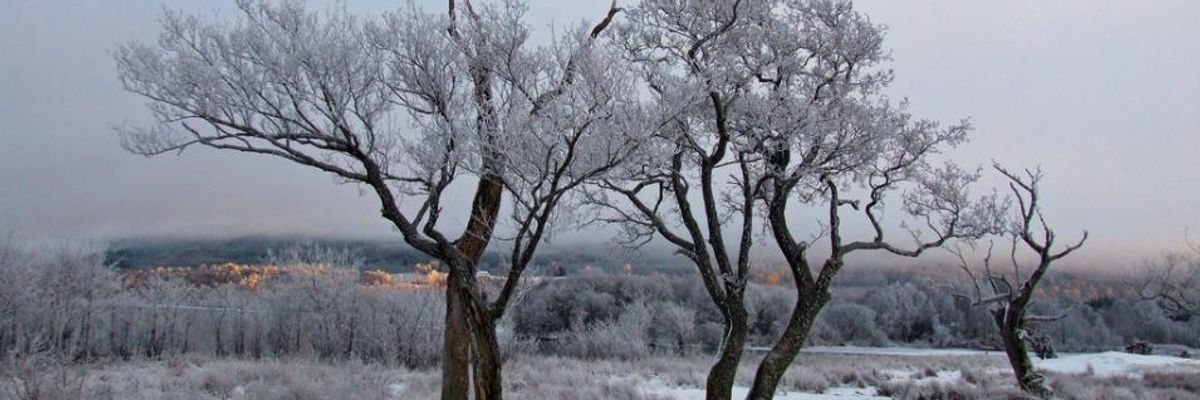LONDON--Spring is arriving ever earlier as greenhouse gas levels rise and global temperatures warm, and the northern hemisphere growing season is now two weeks longer than it was in 1900.
But, paradoxically, new research shows that forest giants that once responded to the early spring are beginning to slow down--because they miss the chill.
Yongshuo Fu, an Earth system scientist at Peking University, Beijing, and colleagues report in Nature journal that they have measured a slowdown in the response of oaks and other forest citizens to the change in temperatures and carbon dioxide levels.
Where these species, on average, unfolded their first leaves four days earlier, with every 1degC rise in temperature, they now do so only 2.3 days earlier for every additional 1degC.
Ever-earlier spring
The reason is that, to take full advantage of the ever-earlier spring, these deciduous species first need to feel a period of chill. And as temperatures on average rise, the extent of true winter chill diminishes.
The researchers concede that there may be other or additional reasons why alder (Alnus glutinosa), silver birch (Betula pendula), horse chestnut (Aesculus hippocastanum), beech (Fagus sylvatica), lime (Tilia cordata), oak (Quercus robur) and ash (Fraxinus excelsior) seem to be slowing in their leafy response.
But since many deciduous trees depend on a frosty spell to release them from their periods of dormancy, it seems a likely factor.
To identify the slowdown, the researchers used data from the Pan-European Phenology Project, which for 33 years has monitored the unfolding of the first leaves of all seven species at 1,245 sites across central Europe.
The scientists used direct observation, and confirmed their hypothesis with computer models to show once again that as humans change the climate, by increasing carbon dioxide levels in the atmosphere as a consequence of the combustion of fossil fuels, they are also changing the ecosystems that support all life on Earth.
And in the same week, US scientists report that as global warming begins to change the mix of mountain wildflowers each spring, pollinating insects too are beginning to respond.
Nicole Miller-Struttmann, a biologist at the State University of New York, and colleagues report in Science journal that, in the last 40 years, the tongues of two species of alpine bumblebee have grown shorter.
Bumblebees need long tongues to reach deep into the flower tubes of the plants they favour. But warmer summers have meant that the flowers they favour most in the Rocky Mountains have become less frequent, and pollinators that once specialised have now become generalist foragers, grabbing honey where they can.
In the course of doing so, two that are commonly found at high altitudes, species Bombus balteatus and B. sylvicola, have evolved shorter tongues.
Gaining altitude
The mix of flowers at lower altitudes has become impoverished, and although mountain flowers have been gaining altitude over the decades, the gain in higher growth has not been enough to offset the loss for the bees.
The research confirms a wider picture of change as a consequence of global warming. In the Americas, plants are colonising higher slopes, and in Europe the bumblebee has also been feeling the heat, and losing part of its range.
In general, high altitude sites seem to be warming faster than the lowlands.
Research of this kind provides a local snapshot of global change, and what it means for individual species in nature's mix.
"We see broader bumblebee foraging niches, immigration by short-tongued bumblebees, and shorter tongue length within resident bee populations as floral resources have dwindled," the scientists conclude.
"In remote mountain habitats--largely isolated from habitat destruction, toxins, and pathogens--evolution is helping wild bees keep pace with climate change."

